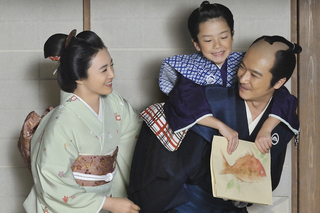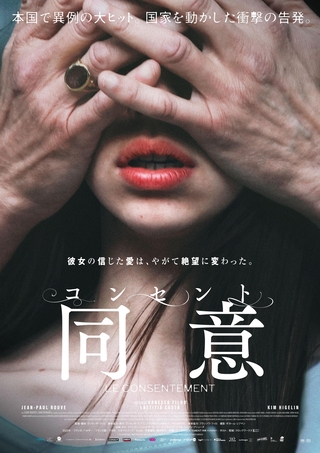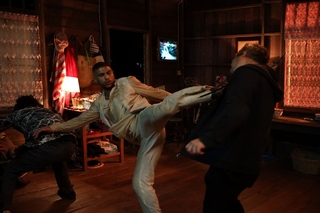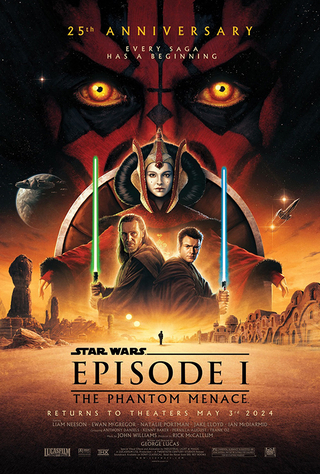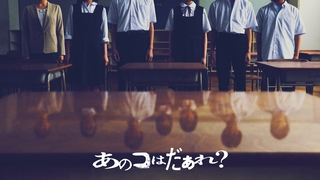コラム:パリジェンヌの東京映画レポート2 - 第5回
2010年8月9日更新

第5回:「小さな村の小さなダンサー」大きな夢をもった小さなダンサー
I told you at the beginning of my column that I’ll have the opportunity to share with you my passion for dancing. “Mao’s last dancer”, an autobiographical movie about the Chinese ballet dancer Li Cunxin, is the occasion for me to do so! It is a touching movie that, I reckon, appeals not only to ballet lovers like me. Indeed, like most dance movies, it carries a deeper message and “Mao’s last dancer” has the ingredients for a perfect dance movie and even more…
First, it’s about believing in one’s dreams and realizing them. It took Li a certain time to discover his passion and ambition for ballet. Because it meant living far away from his family, he did not see dancing as an opportunity, but once he found out how rewarding it was for him to dance, he stuck to his goal and believed in himself.

Second, it is also about the relationship with one’s family and friends. A lot of dance movies end with a final performance in front of family members and friends, as a symbol of what has been achieved. This is also the case in “Mao’s last dancer” and it’s probably one of the most emotional moments in the movie.
And last but not least, there’s the dancing! This movie contains wonderful choreographies, embellished by amazing costumes.
All these ingredients make you leave the theatre with tears in your eyes, but with your heart full of optimism and happy thoughts!
An element of the movie which I find remarkable is the harmony which exists between what is told with words and what is expressed through dancing. In fact, on several occasions, Li expresses through dancing elements of his life that had been told with words and that had contributed to his success, as they pushed him to always go further and to believe in his dreams.
Thus, there is for instance the story Li’s father told them when they were kids, a tale about a frog that couldn’t jump high enough. Li managed to jump high enough, to go further than he though he would be able to. He made the “great leap forward” from the young dancer of a small village to the principal dancer of a big Ballet. You can see this in the “Rite of the Spring” choreography performed in front of his parents in Houston, where Li makes an impressive jump (emphasized in the movie by a slow-motion).

Another important moment is also the very end of the movie, when Li and his wife Mary McKendry make an outdoor performance in China: the last movement they make together refers to a story Li’s ballet teacher told him when he was younger. It’s the story of a bowman who had not enough strength but who worked so hard on it that he finally became a great archer. This story made Li believe in his potential and was therefore essential for his career.
Thus, this movie is for me also a way of showing how dancing enables you to express feelings and life stories. It is a kind of tribute to the force of ballet and to its diversity.
This tribute couldn’t have been possible without the Chinese dancer Chi Cao, who played the part of Li as an adult and who’s currently principal dancer at the Birmingham Royal Ballet. Chi Cao, who had his first acting experience in this movie, was confronted with the differences that exist between dancing and acting.
During an interview I had the chance to assist to, Chi Cao told us about how he had to find the right balance between those performing arts during the shooting. Dancing is about expressing feelings through big and almost exaggerated movements, whereas acting is more about expressing yourself through words and gestures in a more natural and non-exaggerated way. Chi Cao managed to find this balance, and I think you can feel it in the movie.
I could write much more about this movie and about what Chi Cao said about dancing and performing, because it is really something I love, but I’ll just add one last thing which I keep in mind after seeing this movie: on top of being a beautiful life story, “Mao’s last dancer” shows you that believing in your dreams is worth it, and even essential…whatever the way you chose to express them.
[抄訳]
コラムの第1回目に自分のダンスに対する情熱をシェアすると書きましたが、今回の題目である中国人バレエダンサー、リー・ツンシンの半生が描かれる「小さな村の小さなダンサー」は、まさにそのダンスへの情熱をシェアできる映画でした。とても感動的な映画で、私のようなバレエファン以外の観客にもアピールできる作品です。
まず第一に、この映画では一人の人間の夢を信じることとその実現が描かれます。リーがバレエへの情熱と熱意を見つけるまでには、それなりの時間がかかります。リーは最初、ダンスすることをチャンスとは考えられませんでしたが、一度やりがいを見出すと、夢の実現に向かって一生懸命頑張ります。
二つ目に描かれるのは、家族と友達の関係です。多くのダンス映画のクライマックスシーンは、家族や友達を前にした主人公のパフォーマンスです。この映画でも、それは同じで、おそらく劇中でもっとも感動的なシーンになっています。
そして、なんといっても本作の魅力はダンスです。この映画には素晴らしい衣装で装飾された素晴らしいコレオグラフがあります。このすべての要素が観客に、ハッピーな満足感をもたらすとともに涙を誘います。
リーはダンスを通じて、自らの人生を表現しています。子供時代にお父さんから、高く跳べないカエルの話を聞いたリーはなんとか高く跳べるように練習して、最終的には小さな村の小さなダンサーから、有名バレエ団のプリンシパルへと大跳躍を成し遂げます。そして映画のクライマックスである両親を前にした「春の祭典」のパフォーマンスで、印象的なジャンプを披露します。
この映画はダンスというものがいかに感情や人生を語ることが出来るかということを見せていると私は思います。それはまるでバレエの力とその多様性への賛辞のようです。
本作で主人公に扮したツァオ・チーは、現在バーミンガム・ロイヤル・バレエ団のプリンシパルダンサーです。先日来日したツァオ・チーへの取材に同行した際、彼は、映画の撮影を通して、ダンスは大きく誇張した動きを通して感情を表現するもので、演技は自然で誇張しない言葉とジェスチャーを通して表現するものだということを理解したことを教えてくれました。
この映画は本当に大好きで、もっと多くのことを書けますが、最後にひとつだけ記しておくとすれば、とにかく美しい人生の物語だということです。夢を信じることは、その夢を表現する方法が何であれ、とても価値があるということを教えてくれる映画です。


